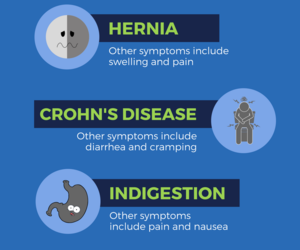What Are the Treatment Options for Appendicitis?

Appendix Facts
The appendix is also known as acecal appendix and sometimes the vermiform appendix. It is small in size with a finger-shaped pouch attached to the large intestines right at the bottom side of the belly.
The lower tip of the appendiz is found 2cm below the ileocecal valve, which distinguishes the large intestine from the small intestine. The tip of the appendix is located in the pelvis in front of the peritoneum tube. This is attached to the cecum from where it grows embryologically. The ceum is also a structure found in between the large and small intestines.
The appendix is approximately 9cm to 20cm in length for humans. The appendix is also 7mm wide. In history, the longest ever identified appendix is a patient from Zagreb with a length of 26cm.
Functions of the Appendix
The appendix has various functions including maintaining the gut flora. For the longest time, the appendix has been known to have no specific function. However, the immune tissues surrounding it carry out lots of functions.
But research in 2007 revealed that the appendix serves as storage for important bacteria - those that have been eliminated by diseases from the intestines. Research also indicates that individuals who lack an appendix are more likely to suffer from clostridium difficile colitis. Hence the appendix could reduce diseases attacking through the gut flora.
The appendix also provides immunity to the body. It assists in locomotion and excreting wastes from the body’s digestive system, regulating disease-causing germs which may also provide protection from contagious diseases.
Diagnosis of Appendicitis
The exact cause of appendicitis is unknown, but it is thought to develop when something blocks the opening of the appendix like feces from the intestine. This can cause bacteria to get trapped inside the appendix, leading to infection, swelling, and pain.
A diagnosis of appendicitis will be made by the doctor after asking you about your symptoms and a physical examination. Pain when pressure is applied to the lower right side of the abdomen is a common symptom. If a clear diagnosis cannot be made based on the physical symptoms then further tests may be done.
There are two types of appendicitis – severe one that always requires surgery and a milder form that can be treated with antibiotics. The final call on the method of treatment will be taken by the team of doctors involved and will be based on physical examinations, as well as any other tests done.
Treatment for Appendicitis
While evaluating the treatment options for appendicitis, it is important to review a few important facts about this condition.
Appendicitis is an inflammation of the appendix. If not treated on time, the appendix can burst. This results to leakage of the infected contents into the abdominal cavity. This can lead to potential serious conditions like peritonitis. Peritonitis can cause blood poisoning which can be fatal.
Appendicitis is treated on the basis of the severity of the symptoms. In most cases, surgery is the preferred option, especially when appendicitis presents as a medical emergency or is very severe. The other option is treatment with antibiotics for patients with milder symptoms. Along with antibiotics to treat infection, a liquid or soft diet, until the infection subsides, will be advised. In some circumstances antibiotic therapy alone is usually reserved for patients too frail to undergo surgery. Studies that have compared the outcome of surgery to the outcome of antibiotics show that about 70 percent of cases may resolve with antibiotic therapy and not require surgery. However, this type of treatment is not currently considered as an alternative to surgery - in most cases.
Surgery and Antibiotics
Appendectomy (surgery to remove the appendix) is mostly applied in treating infection of the appendix when it ruptures, releasing contents to the surrounding. However, timely antibiotics are administered instead of surgery to cure the infection. Some of the antibiotics used in treating the infection are: cefotetan, piperacillin, tazobactam, ampicillin, metronidazole, cefepime, gentamicin, ertapenem, levofloxacin, clindamycin, and ticarcillin. When the appendix has ruptured, doctors could issue out intravenous antibiotics through an injection in the veins to treat abdominal infections like peritonitis - a major infection that occurs in the inner layer that covers the abdominal interior after the appendix has been taken out.
Antibiotics are then taken up continuously for many weeks, both orally and through injection, but mostly a week is enough to heal the disease. When one has a ruptured appendix, the doctors issue antibiotics to be taken for six to eight weeks prior to the operation to remove the damaged tissues. However, research has shown that operations are not necessary in treating minor cases of appendicitis that has no breakages, pus, or peritonitis. Antibiotics can work out best in these cases. More than half of the patients who take only antibiotics for these minor cases don’t need any medication for some years. Also, antibiotics treatment is cheaper compared to surgery. With antibiotics, there are no surgery-related difficulties for individuals who might be vulnerable.
However, another research from the New England Journal of Medicine (NEJM) also showed that patients who were treated with only antibiotics often encountered failure eventually, hence had recurrent appendicitis that finally required surgery. Patients treated with antibiotics suffered from the disease again within a year. Even worse, some of these people developed another case of appendicitis which required treatment of a ruptured appendix and further related issues.
The bottom line
Appendicitis is a serious medical condition. With early diagnosis and surgery, the mortality rate is very low and the patient is discharged within a few days with a very short recovery period. In the event of complications, such as a rupture, the prognosis is more serious, although the use of antibiotics mortality has been reduced to zero in many institutions. Still these patients may need further surgery and thus recovery period will be longer. Treatment options are decided usually on a case to case basis depending on symptoms.











